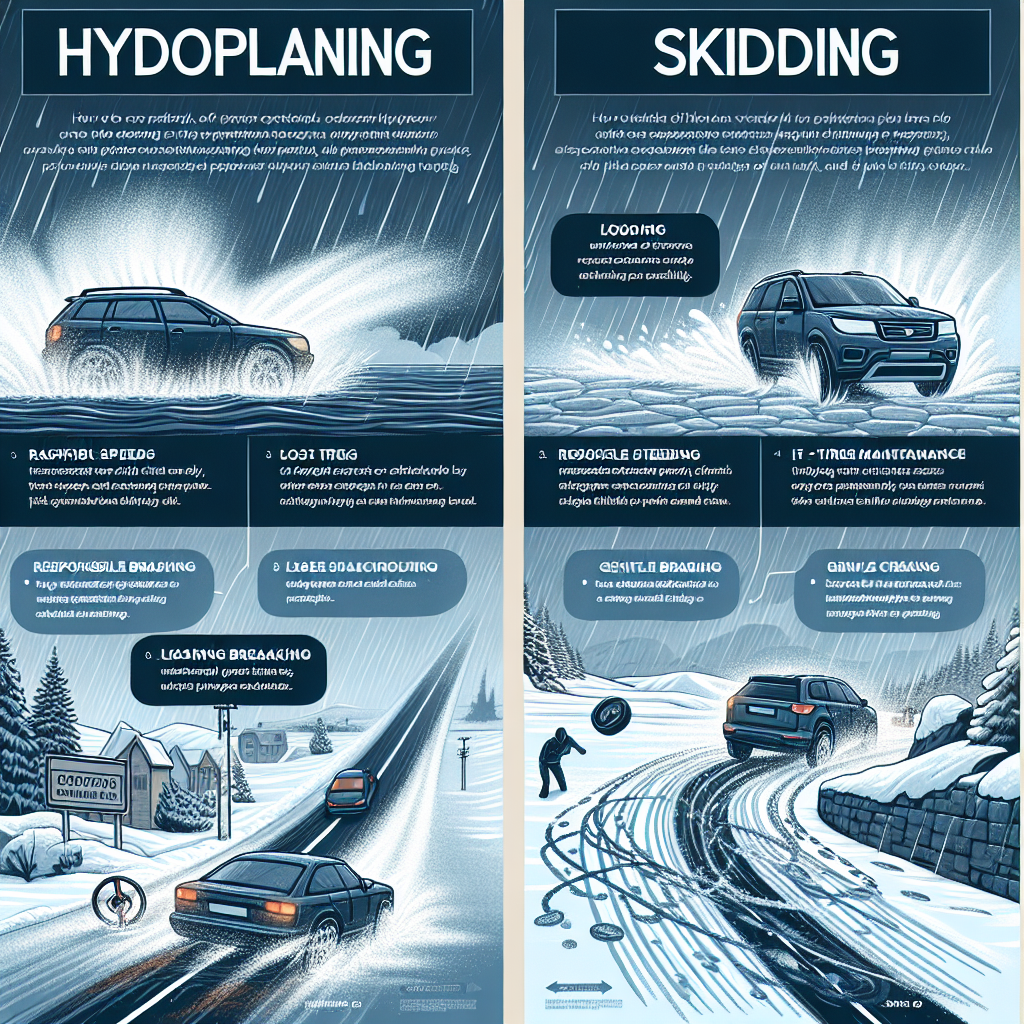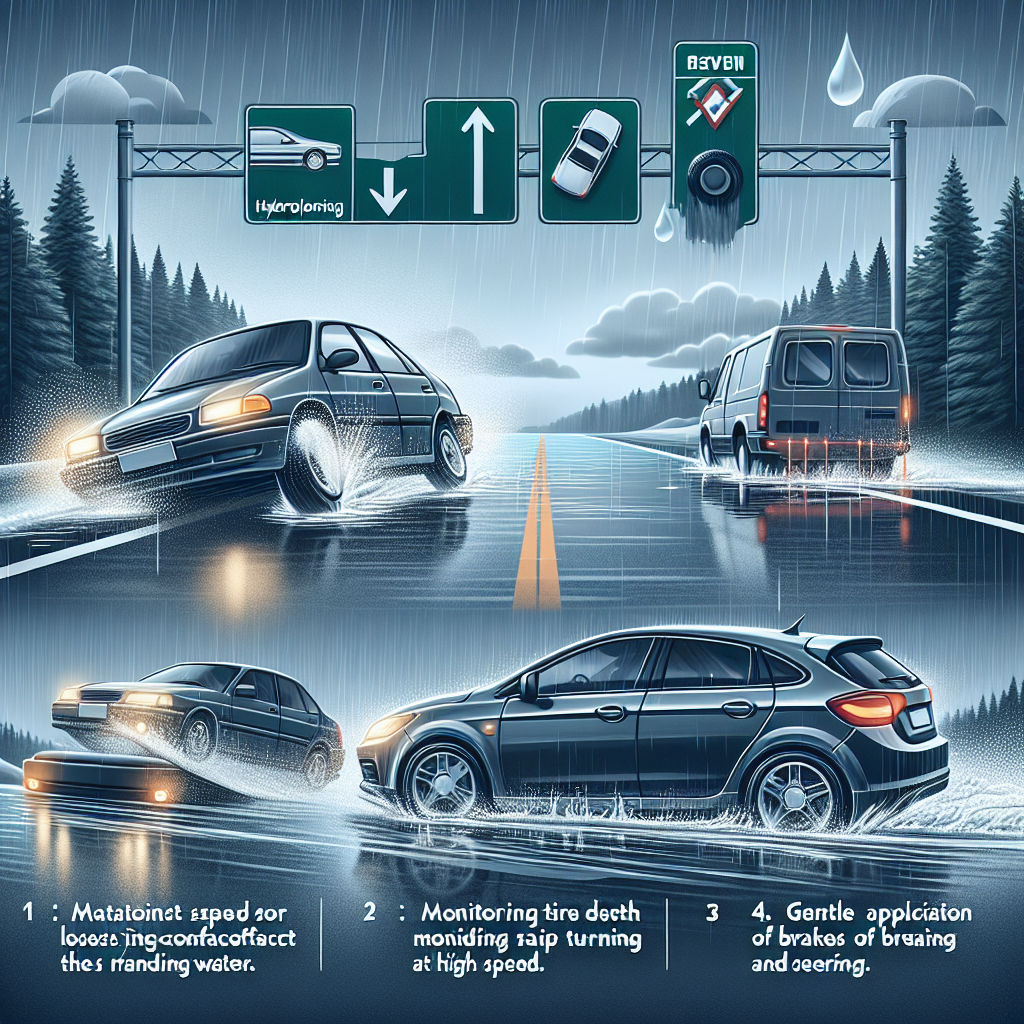-
Table of Contents
Hydroplaning and Skidding: What are they and how to prevent it

Introduction
Hydroplaning and skidding are two common hazards that drivers face on wet roads. Understanding these phenomena and knowing how to prevent them is crucial for safe driving. In this article, we will explore what hydroplaning and skidding are, the factors that contribute to them, and effective strategies to prevent these dangerous situations.
What is Hydroplaning?
Hydroplaning, also known as aquaplaning, occurs when a layer of water builds up between the tires of a vehicle and the road surface, resulting in a loss of traction. This loss of traction can lead to a complete loss of control over the vehicle, making hydroplaning a serious safety concern.
Causes of Hydroplaning
Hydroplaning is primarily caused by the inability of the tires to displace water effectively. The following factors contribute to the likelihood of hydroplaning:
- Excessive speed: Driving too fast on wet roads increases the risk of hydroplaning as the tires cannot effectively push water aside.
- Worn-out tires: Tires with low tread depth have reduced grip on the road, making them more prone to hydroplaning.
- Poor tire maintenance: Improper tire inflation and lack of regular tire rotation can affect the tire’s ability to disperse water.
- Standing water: Puddles and standing water on the road increase the risk of hydroplaning, especially at higher speeds.
Preventing Hydroplaning
Fortunately, there are several measures drivers can take to prevent hydroplaning:
- Reduce speed: Slowing down in wet conditions allows the tires to maintain better contact with the road surface, reducing the risk of hydroplaning.
- Maintain proper tire tread depth: Regularly check the tread depth of your tires and replace them when they become worn out. Adequate tread depth helps the tires disperse water effectively.
- Proper tire maintenance: Ensure your tires are properly inflated and regularly rotated to maintain optimal performance on wet roads.
- Avoid standing water: When possible, try to steer clear of puddles and standing water on the road to minimize the risk of hydroplaning.
What is Skidding?
Skidding occurs when the tires lose traction with the road surface, causing the vehicle to slide or spin out of control. Skidding can happen in various weather conditions, but it is particularly common on wet or icy roads.
Causes of Skidding
Skidding can be caused by several factors, including:
- Excessive speed: Driving too fast for the road conditions reduces the tire’s ability to maintain traction, increasing the likelihood of skidding.
- Sharp turns or sudden braking: Abrupt maneuvers can cause the tires to lose grip and result in skidding.
- Worn-out tires: Tires with low tread depth have reduced traction, making them more prone to skidding.
- Poor road conditions: Wet, icy, or slippery roads provide less grip, increasing the risk of skidding.
Preventing Skidding
Preventing skidding requires a combination of cautious driving techniques and proper vehicle maintenance:
- Drive at a safe speed: Adjust your speed to match the road conditions, especially in wet or icy weather.
- Be gentle with the controls: Avoid sudden acceleration, braking, or steering inputs that can cause the tires to lose traction.
- Maintain proper tire tread depth: Regularly check your tire tread depth and replace tires when necessary to ensure optimal grip on the road.
- Keep a safe distance: Maintain a safe following distance from the vehicle in front of you to allow for ample reaction time in case of sudden stops or skids.
Conclusion
Hydroplaning and skidding are dangerous situations that can lead to loss of control over a vehicle. By understanding the causes and implementing preventive measures, drivers can significantly reduce the risk of hydroplaning and skidding. Remember to adjust your speed, maintain proper tire tread depth, and practice cautious driving techniques in adverse weather conditions. By prioritizing safety and taking proactive steps, we can ensure a safer driving experience for ourselves and others on the road.



